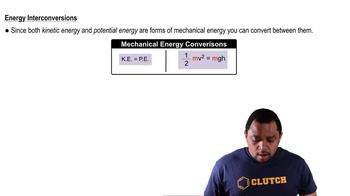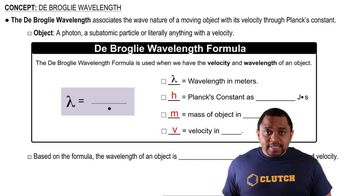The human eye contains a molecule called 11-cis-retinal that changes shape when struck with light of sufficient energy. The change in shape triggers a series of events that results in an electrical signal being sent to the brain that results in vision. The minimum energy required to change the conformation of 11-cis-retinal within the eye is about 164 kJ/mol. Calculate the longest wavelength visible to the human eye.

In a technique used for surface analysis called Auger electron spectroscopy (AES), electrons are accelerated toward a metal surface. These electrons cause the emissions of secondary electrons—called Auger electrons—from the metal surface. The kinetic energy of the Auger electrons depends on the composition of the surface. The presence of oxygen atoms on the surface results in Auger electrons with a kinetic energy of approximately 506 eV. What is the de Broglie wavelength of one of these electrons? [KE = 1/2mv^2; 1 electron volt (eV) = 1.602 * 10^(-19) J]
 Verified step by step guidance
Verified step by step guidanceKey Concepts
Kinetic Energy and Electron Mass

de Broglie Wavelength

Conversion of Energy Units

An argon ion laser puts out 5.0 W of continuous power at a wavelength of 532 nm. The diameter of the laser beam is 5.5 mm. If the laser is pointed toward a pinhole with a diameter of 1.2 mm, how many photons travel through the pinhole per second? Assume that the light intensity is equally distributed throughout the entire cross-sectional area of the beam. (1 W = 1 J/s)
An X-ray photon of wavelength 0.989 nm strikes a surface. The emitted electron has a kinetic energy of 969 eV. What is the binding energy of the electron in kJ/mol? [KE = 1/2 mv2; 1 electron volt (eV) = 1.602×10–19 J]
Ionization involves completely removing an electron from an atom. How much energy is required to ionize a hydrogen atom in its ground (or lowest energy) state? What wavelength of light contains enough energy in a single photon to ionize a hydrogen atom?
The energy required to ionize sodium is 496 kJ/mol. What minimum frequency of light is required to ionize sodium?
